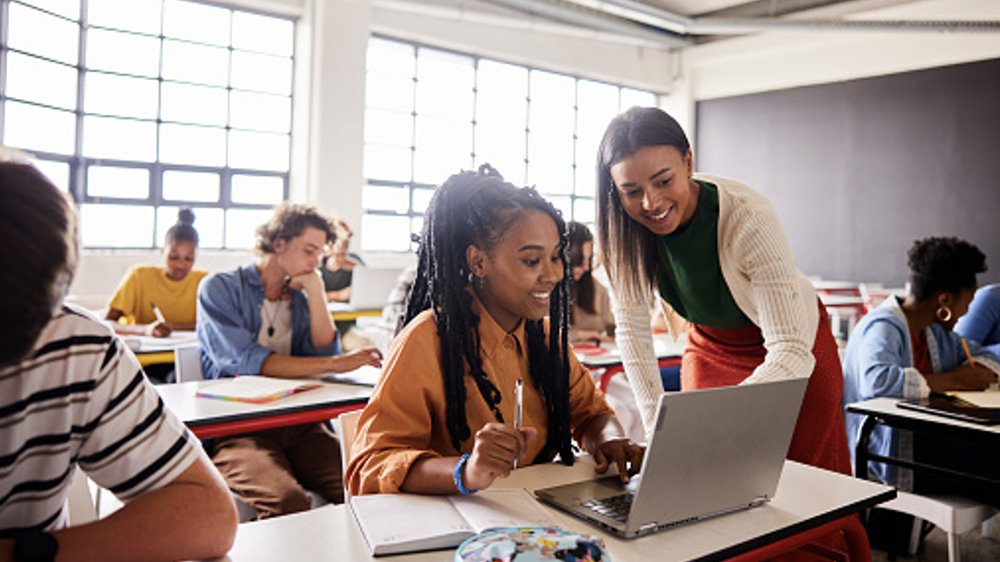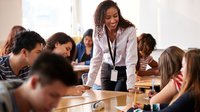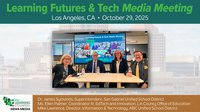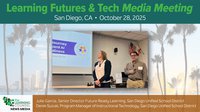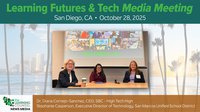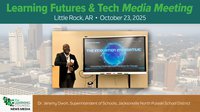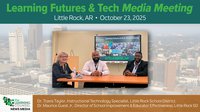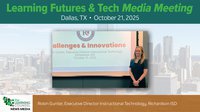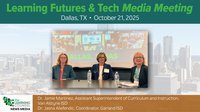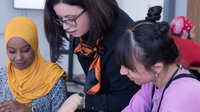An ecosystem consists of a complex network of interconnected beings that support one another in the bubble of life. Every piece is essential, meeting a diverse set of needs to ensure every component thrives and flourishes. It’s a delicate and complex system of interdependency – if one small element is disrupted or breaks down, the entire order is in danger of collapse.
For far too long, traditional classrooms – those that are reliant on live lectures and fixed-pace learning – have mimicked the architecture of an environmental ecosystem. When educators are lecturing to a dynamic classroom of 25+ students, all it takes is one small disruption for the entire learning environment to crumble. Like an ecosystem, these traditional learning environments are fragile – there are a large number of variables that put classrooms at a high risk of breaking down at any point in time.
When classrooms evolve from teacher-driven to student-centered, the issues that have the potential to disrupt the classroom ecosystem become substantially easier to isolate and de-escalate. Shifting to a more student-centered approach allows students to have greater agency over their learning, and less ability to derail the whole class, if a behavior management issue arises.
Teachers are continuing to work to manage a myriad of emotional dysregulation and behavior issues, students operating at different learning levels, and chronic absenteeism or tardiness. All of which can quickly escalate the likelihood of disruption in the classroom. Ultimately, it's impossible for teachers to manage these issues while providing continuous learning to all students, leading to lost learning time, frustrated students, and burned-out teachers.
Making the shift from a teacher to student-led classroom is a challenge, but one that produces remarkable benefits. One pathway is by leveraging technology to free up educator time and empower students to be more self-direct. When educators blend instruction by recording their own instructional videos to replace in-class lectures, it allows each student to learn at their own pace and frees up valuable class time for teachers. Teachers can then spend the majority of their class time providing targeted individual and small-group academic and emotional support for students. This also enables students to keep up with content even if they are absent from school.
Here are three ways a student-centered learning environment can work to strengthen a classroom:
Emotional Dysregulation
One devastating fallout of the pandemic is the toll it took on the emotional health of our nation’s youth. This, combined with the pressures of social media, threat of mass violence (especially in schools), natural disasters, climate change, and political polarization are producing levels of social and emotional health trauma we’ve never before seen. Students are experiencing unprecedented levels of emotional dysregulation and distress and traditional models of instruction were never designed to handle these high levels of trauma. Addressing emotional issues publicly, in front of a classroom of their peers, creates embarrassment, shame and panic, only escalating the situation.
Empowering teachers to effectively manage emotional and behavioral issues through one-on-one private discussions leads to a space where students are properly supported and classroom learning remains continuous. As a result, these issues are able to be isolated, contained, de-escalated and effectively managed. Building student-centered classrooms greatly reduces the likelihood that all learning stops when one or more students is experiencing emotional dysregulation.
Diversity of Learning Levels
Shifting to a self-paced learning model in classrooms gives students greater autonomy over their own learning, keeping students at varying academic levels interested and engaged in content. In a student-centered environment, students control the pace of their learning within a unit of study. This builds student self-regulation skills and ensures that each student always has appropriately challenging material to learn.
Teachers monitor daily progress, and once the student has mastered the content, teachers are able to advance them on to the next lesson. Students lean on their peers through collaboration and small group activities, but they’re not reliant on them or the unwavering attention of the classroom educator to engage in the learning experience. Students are able to spend more time on lessons they don’t understand, fast forward through content they’ve mastered, and teachers’ time in class is spent offering targeted academic support where it’s needed.
Absenteeism and Tardiness
According to a survey by the Institute of Education Sciences (IES), student absenteeism has increased in public schools nationwide between 2020-21 and 2021-2022, especially among schools in impoverished areas and those serving higher concentrations of Black, Hispanic, Asian, Native American and multi-racial students, magnifying inequities and further eroding educational inequality in our country. Shifting toward self-paced learning by replacing live lectures with instructional videos and other digital resources ensures students don’t “miss the lesson” when they miss class. Students can seamlessly pick up where they left off when they are late or returning from an absence by tapping into available digital resources. They can also lean on their classroom teacher for additional in-person support as needed.
Ecosystems are fragile, but if left undisturbed the individual elements will thrive in symbiotic harmony, growing into something stronger than they would have been able to on their own. Likewise, a student-centered classroom, structured to withstand inevitable interferences, will lay the necessary groundwork for students to thrive in their academic environment.
About the author
Kareem Farah is the CEO and Co-Founder of
The Modern Classrooms Project, a nonprofit dedicated to empowering educators to build classrooms that respond to every student’s needs.

